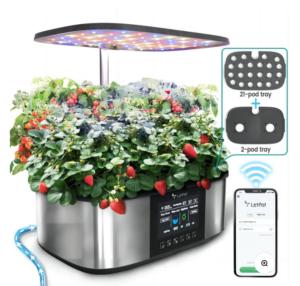Choosing the best plants for your aquaponics system is half the battle.
Let’s be clear: you can grow anything you like in your aquaponic garden, but some plants are significantly easier to master than others. When you choose plants that are well suited to aquaponic growing you’ll see better yields in a shorter timeframe, deal with fewer complications like diseases and pests, and are overall more likely to enjoy the process.
So whether you’re a complete beginner, an established gardener, or looking to take your crops to market, this guide will help you select the right plants to grow.
What are the Best Plants for Aquaponics Systems?
So what are the best plants to grow in an aquaponics system? Well, what you choose to grow will largely depend on your goals.
For your first time growing in an aquaponic garden, it’s a good idea to pick from the easiest plants and set yourself up for success. It’s best to choose plants that:
- You Actually Want to Eat: your taste buds aren’t going to change overnight just because you started an aquaponic garden. Getting to eat what you’ve grown is easily the most rewarding part of the entire process, so for your first crop you should choose something you regularly enjoy eating! If you don’t eat many vegetables to begin with, think about which ones could be easily integrated into your usual kinds of meals. Of course, eating what you grow isn’t mandatory, but it makes gardening a lot more fun and will leave you hungry for more.
- Are Well Suited to Aquaponics: a failed first crop is one of the most common reasons people give up on gardening. Get started on the right foot by choosing a plant that’s well suited to aquaponics. This will boost your chance of success and leaving you excited to keep going.
- Grow Quickly: there’s nothing worse than waiting three months only to discover that your crop failed. Choose a fast-growing plant for your first crop so that if something does go wrong, you won’t have invested too much time and energy. It’s much easier to shrug it off and try again when you’ve only spent a few weeks.
- Need Fewer Nutrients: if you’re a first time aquaponic gardener or someone working with a smaller setup, your system is going to be less nutrient-dense. This is because in a small aquaponic garden there are fewer fish creating less waste, and therefore fewer nutrients in the water. These kinds of setups are best suited to smaller plants that require a lower nutrient input: plants with lots of leaves and no fruit or flower.
- Aren’t Fussy: there’s a lot to learn when you first get started in aquaponics, so make your life simpler and the process more enjoyable by choosing plants that don’t have very specific requirements. Instead of battling with plants that will only succeed if you get the temperature, pH, and humidity just right, your first crop should be something easy going and forgiving so a little mistake here or there won’t wipe it out.
Once you’re more comfortable with the aquaponic process or upgrade to a bigger (and therefore more nutrient-dense) system, there are plenty of fruiting plants that make excellent additions to your garden. These plants will require a little more attention and expertise but can thrive under the right conditions and put a wider variety of foods on your table.
Finally, if your goal is to harvest your crop to sell, certain plants are best suited to aquaponic conditions and promise a better yield for maximum profitability – a factor not many hobbyists are concerned about.
So whether you’re a beginner, an established gardener, or a budding entrepreneur, read on to find out which plants will do best in your aquaponic garden.
The 8 Easiest Plants for Beginner Aquaponic Gardeners
With the criteria above in mind, here are eight beginner-friendly plants and herbs that are versatile, fast growing, and forgiving of beginner mistakes.
The best crops for you to try when you’re first getting started are:
Lettuce
Lettuce is a popular first choice for new aquaponic and hydroponic gardeners everywhere. Lettuce of all kinds thrives in a hydroponic environment, which provides the ideal conditions to keep its roots moist but not sodden. Aquaponic lettuce is one of the easiest plants because it grows quickly and doesn’t require much space, making it the perfect first crop for even the smallest system. There are a wide range of different varieties to choose from depending on your preference and palate.
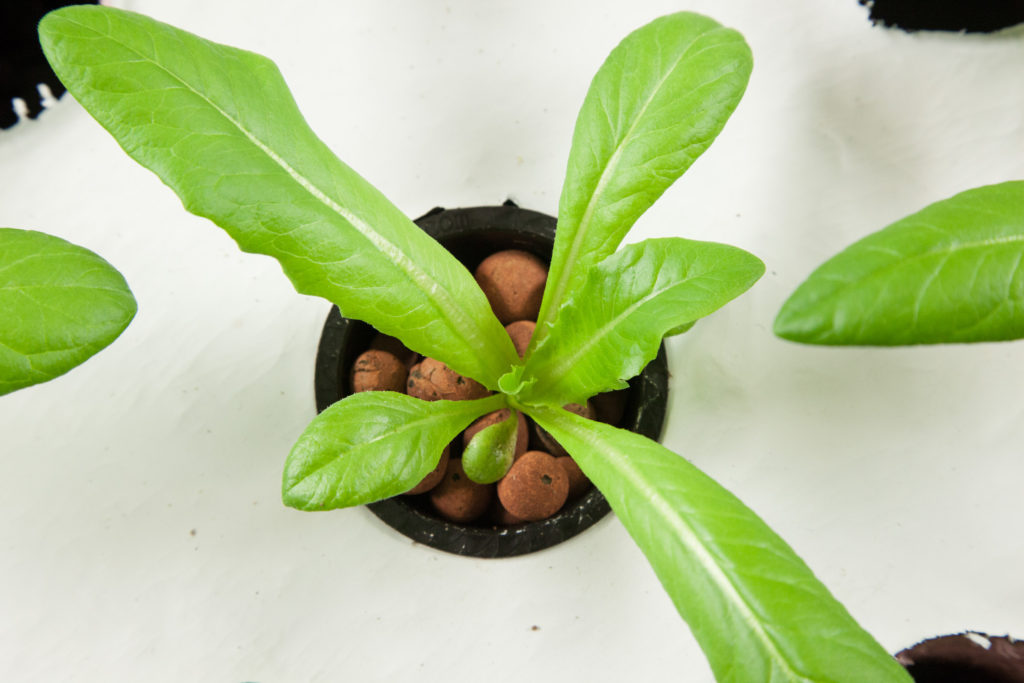
Difficulty: easy
Time to harvest: 40-80 days (for full maturity)
Nutrient needs: medium
Season: Cool
Temperature: 65-80 degrees Fahrenheit
pH: 5.6 – 6.2
Light: 12-18 hours
Best system: any
Radishes
Root vegetables can be a challenge in aquaponic gardens, but radishes are the rare exception that thrive. In fact, many gardeners find that they do better in aquaponics than soil. These bright, crunchy vegetables mature quickly, giving you plenty of early wins as you learn the aquaponic ropes. They’re delicious both raw and roasted, so you can find a radish recipe to please even the pickiest eaters.
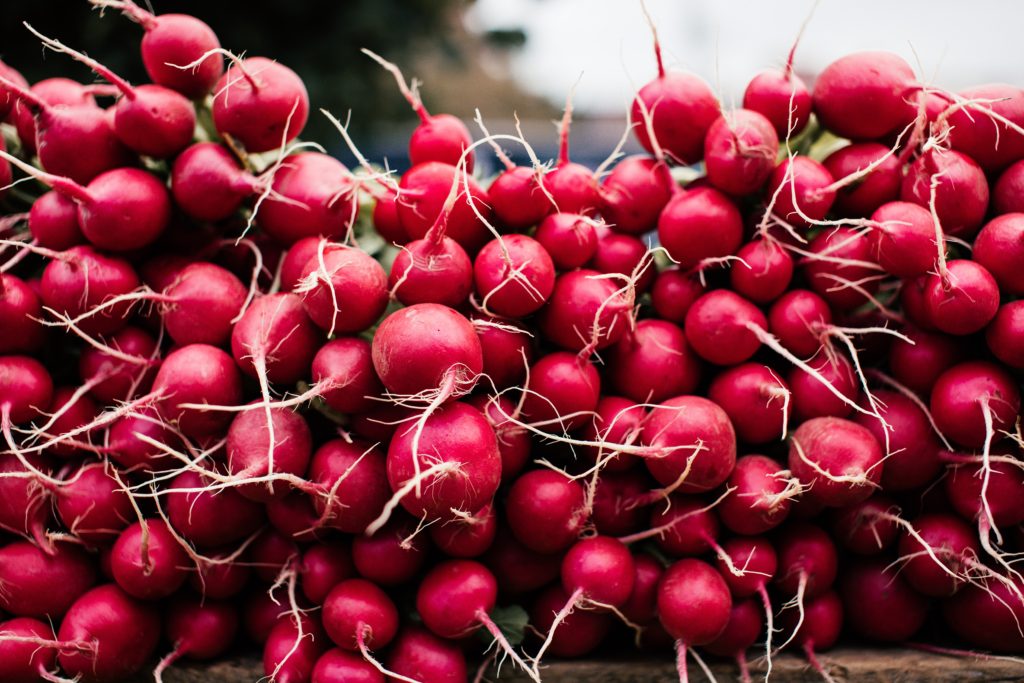
Difficulty: easy
Time to harvest: 30 days
Nutrient needs: medium
Season: Cool
Temperature: 50-65 degrees Fahrenheit
pH: 6.0 – 7.0
Light: 6-10 hours
Best system: DWC, Ebb and Flow
Kale
Kale is a hearty brassica that grows rapidly in an aquaponic garden. It’s also extremely healthy, containing antioxidants, vitamin C and K, and calcium. Despite this, it requires very little from you in terms of nutrient input, so you won’t have to worry too much about getting the nutrient solution correct. It also gets along well with any kind of fish you choose. That’s why this easy-going green is an ideal crop for beginners.

Difficulty: easy
Time to harvest: 45 days (for full maturity)
Nutrient needs: low
Season: Cool
Temperature: 55-70 degrees Fahrenheit
pH: 6.0 – 7.5
Light: 6 hours
Best system: tower, raft
Cabbage
Cabbage is a low-maintenance leafy green that is easy to grow aquaponically. Like lettuce, the aquaponic environment is an ideal setup for cabbage, and it is tolerant of temperature fluctuations provided you don’t let expose it to an excessive amount of heat. It’s also a great plant for learning how different factors impact your crop, because the size of each head of lettuce will clearly indicate how happy (or otherwise) each plant was with its growing conditions.
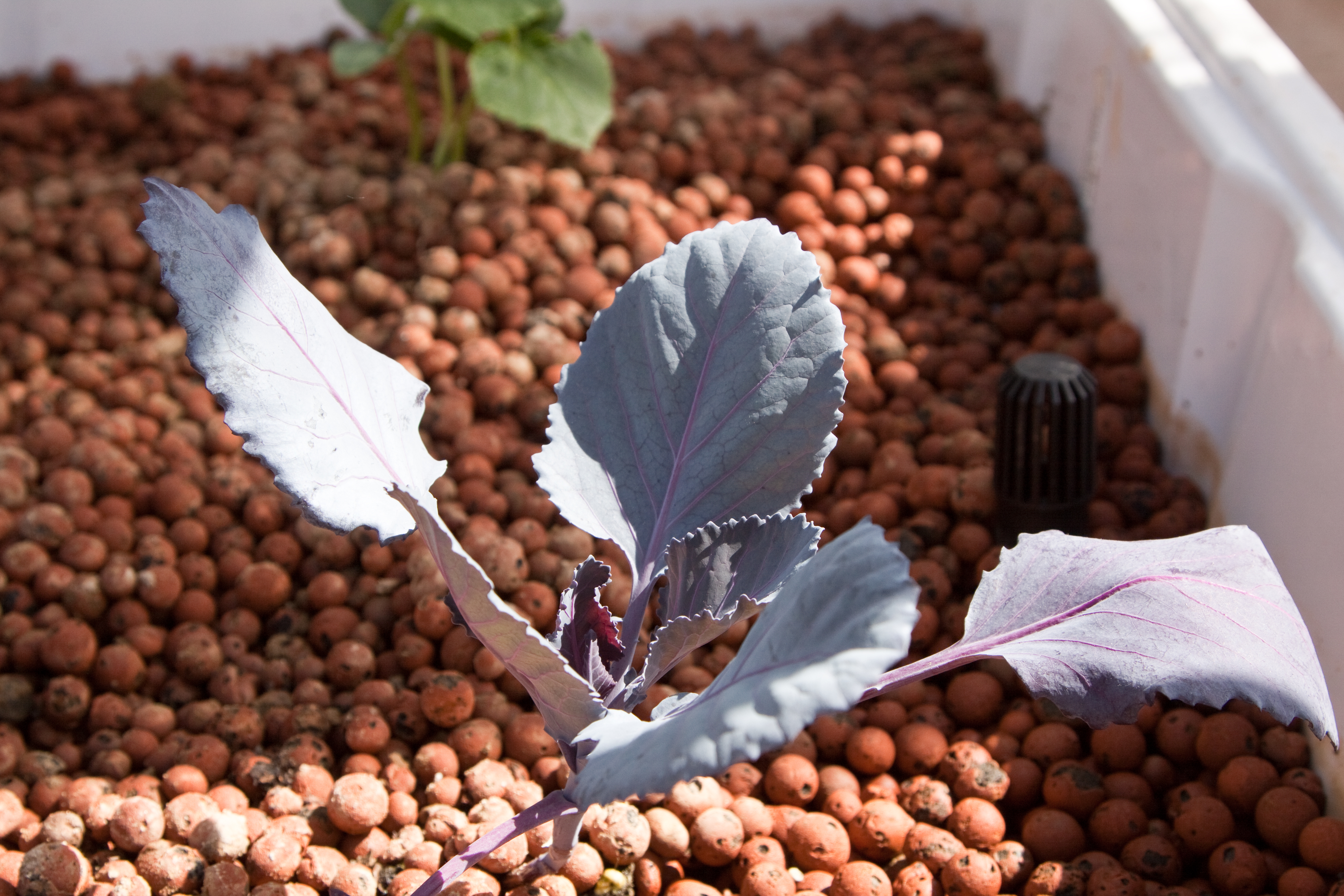
Difficulty: easy
Time to harvest: 8-10 weeks
Nutrient needs: high
Season: Cool
Temperature: 65-75 degrees Fahrenheit
pH: 6.5 – 7.0
Light: 6 hours
Best system: DWC
Basil
Basil easily beats the competition when it comes to aquaponic herbs. It simply loves the heat and moisture that an aquaponic setup provides. Basil is a fast grower and responds extremely well to pruning, so will reward you with plenty of fresh green growth after every harvest. And who doesn’t enjoy a fresh sprig of basil on their pasta?
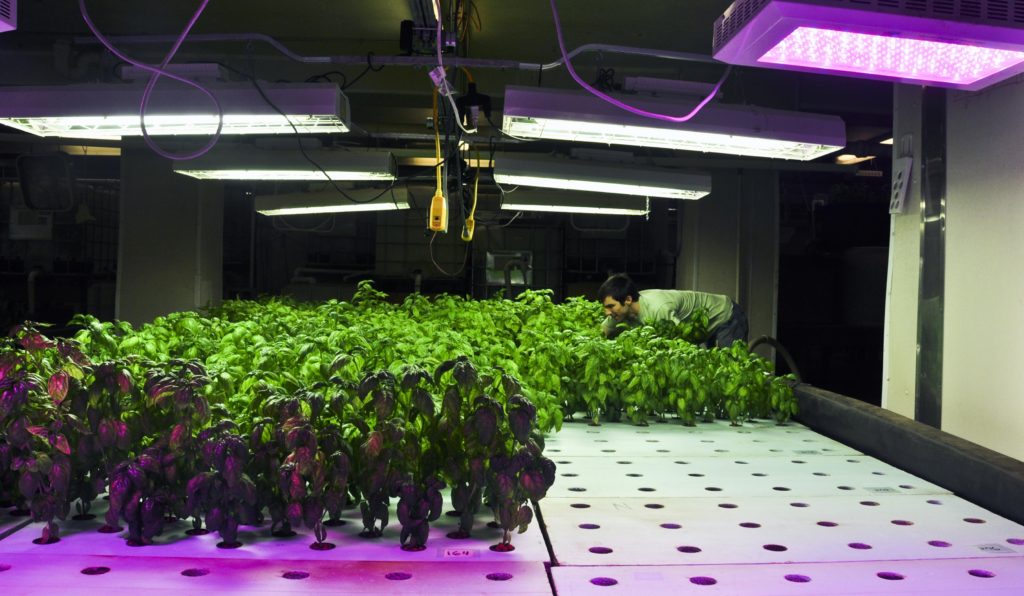
Difficulty: easy
Time to harvest: 25 days
Nutrient needs: medium
Temperature: 65-85 degrees Fahrenheit
pH: 6.2 – 6.8
Light: 14-18 hours
Best system: DWC, Ebb and Flow
Watercress
Its name is already a hint that this low-maintenance herb will thrive in an aquaponic garden. It grows extremely quickly with very little light and is packed with nutrients, making it an excellent addition to any salad mix. But be warned, watercress grows so easily that it might take over your entire grow bed if you don’t keep a close eye on it, so it’s best to keep it separated from other plants.
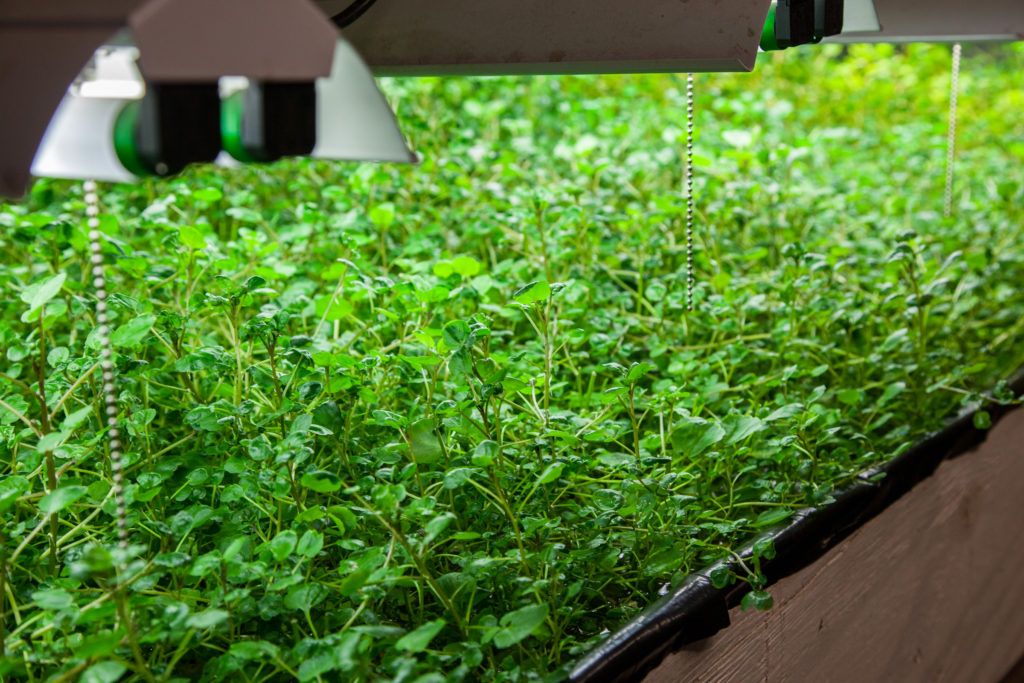
Difficulty: easy
Time to harvest: 4-8 weeks
Nutrient needs: low
Season: cool
Temperature: 77-96 degrees Fahrenheit
pH: 6.5 – 6.8
Light: 4 hours
Best system: Ebb and Flow, NFT
Mint
Mint is another popular herb that can quickly dominate a grow bed if you don’t keep it in check. Anyone who’s grown mint in soil knows it’s impossible to kill once it gets established – an ideal trait for beginner aquaponic gardeners who might need a degree of forgiveness as they grow. And you’ll never run out of uses for it, whether you like it in your cocktail or make your own essential oils.

Difficulty: easy
Time to harvest: 4-8 weeks
Nutrient needs: low
Season: warm
Temperature: 65-80 degrees Fahrenheit
pH: 6.1 – 6.8
Light: 12 hours
Best system: any
Chives
This mild member of the onion family is a perennial favorite. Unlike other types of onion, chives don’t form a large bulb underground, which is why they’re ideal for aquaponic gardening. Add them as a garnish or flavor boost to all sorts of dishes and, if your grow bed has the right conditions for them to really flourish, the flowers are edible too!

Difficulty: easy
Time to harvest: 4-8 weeks
Nutrient needs: low
Season: cool
Temperature: 65-80 degrees Fahrenheit
pH: 6.1 – 6.8
Light: 12 hours
Best system: any
The 6 Best Plants for Established Aquaponic Gardeners
Smaller aquaponic systems are limited in terms of their nutritional output and space, but once you get the hang of aquaponics you can upgrade to a larger system. More fish will produce more waste, which creates a more nutrient-dense setup that can support heavy feeders like fruiting and flowering plants. These crops tend to grow larger and also require a bit more finesse when it comes to the temperature, pH, spacing, and light, but if you create the ideal conditions they’ll reward you with a wide variety of delicious fresh vegetables to enjoy.
Established aquaponic gardeners will find success growing:
Tomatoes
One of the most popular plants to grow in any kind of system, tomatoes are heavy feeders that need a lot of nutrient input to grow big and tasty.
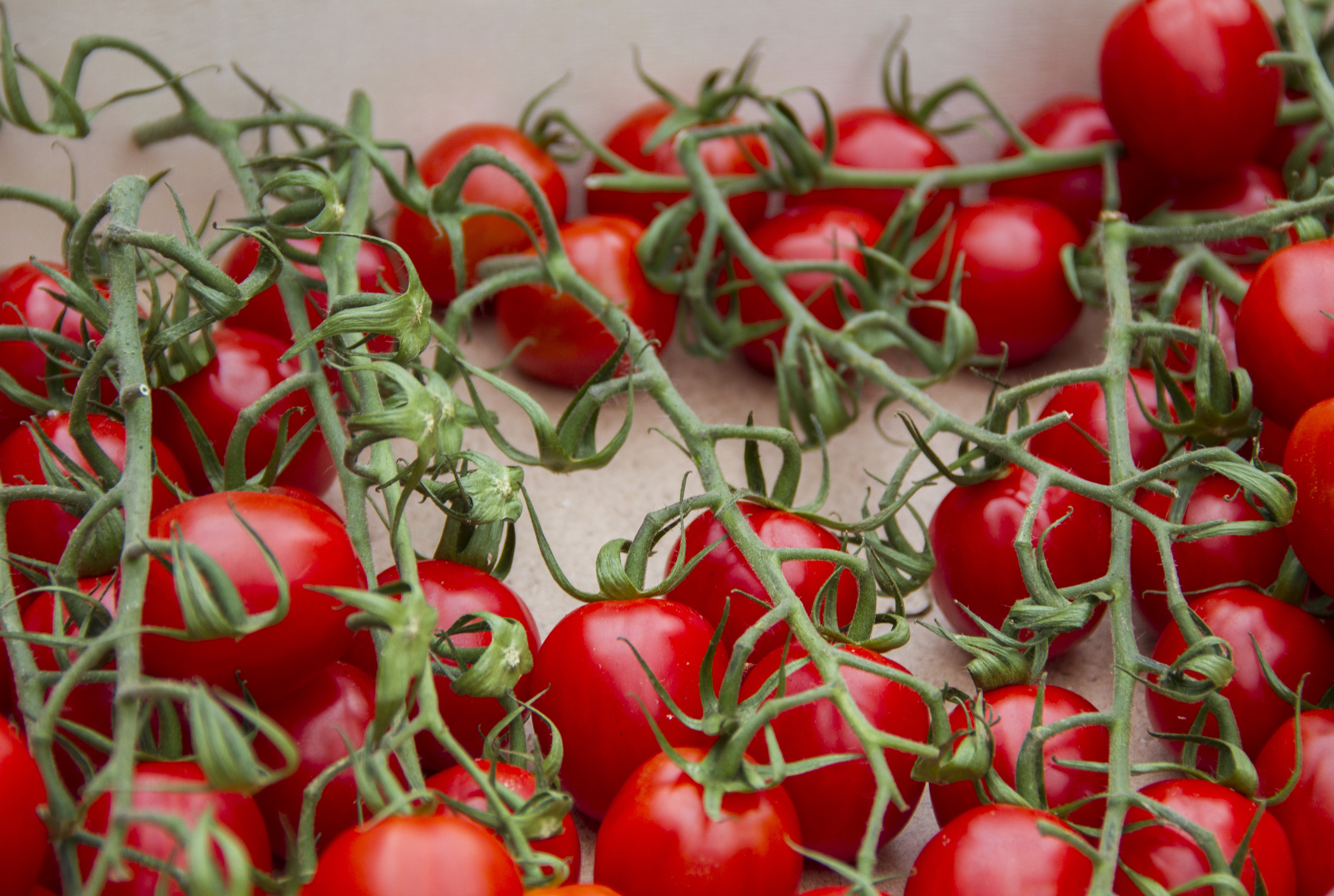
Difficulty: moderate
Time to harvest: 4-8 weeks
Nutrient needs: high
Season: Warm
Temperature: 70-80 degrees Fahrenheit
pH: 5.5- 6.5
Light: 8-10 hours
Best system: DWC
Peppers
Like tomatoes, peppers need high levels of nutrients to grow their fruit but do very well in aquaponic systems. Bell peppers are a favorite amongst aquaponic growers.
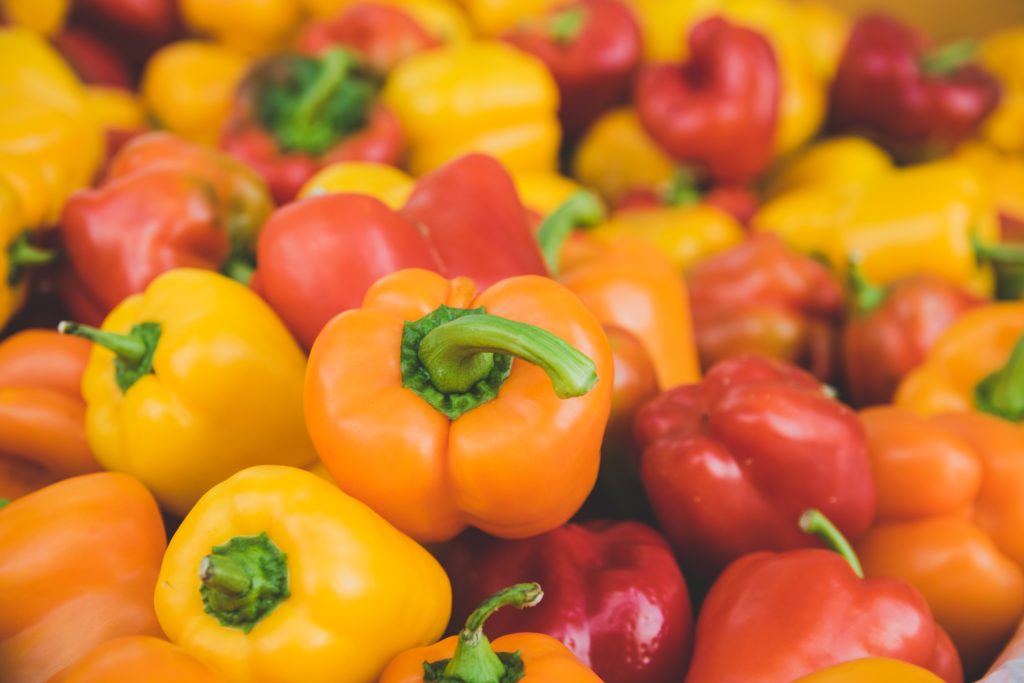
Difficulty: easy-moderate
Time to harvest: 50 – 150 days
Nutrient needs: high
Season: Warm
Temperature: 65-80 degrees Fahrenheit
pH: 6.0- 6.5
Light: 12-18 hours
Best system: DWC
Cucumbers
The vining nature of cucumbers takes a little more skill than some of the easier vegetables but is well worth the effort. Provide them with the space and support they need to grow and you can enjoy fresh cucumbers all year round.
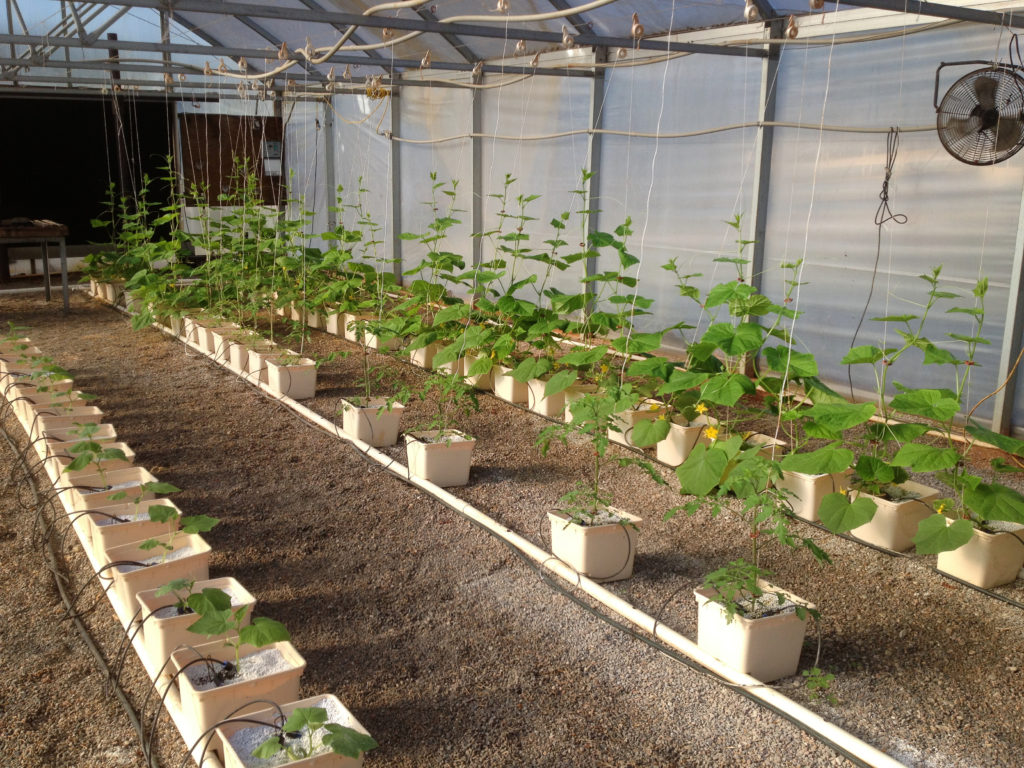
Difficulty: moderate
Time to harvest: 50 – 70 days
Nutrient needs: high
Season: Warm
Temperature: 65-80 degrees Fahrenheit
pH: 5.5 – 6.0
Light: 12-14 hours
Best system: Drip, DWC, Ebb and Flow
Strawberries
Nothing beats fresh strawberries in summer. They are by far the favorite fruit amongst aquaponic growers, taking up very little space and can provide year-round harvests when grown indoors. Closely monitoring the water quality to prevent high levels of ammonia is the key to aquaponic strawberry success.
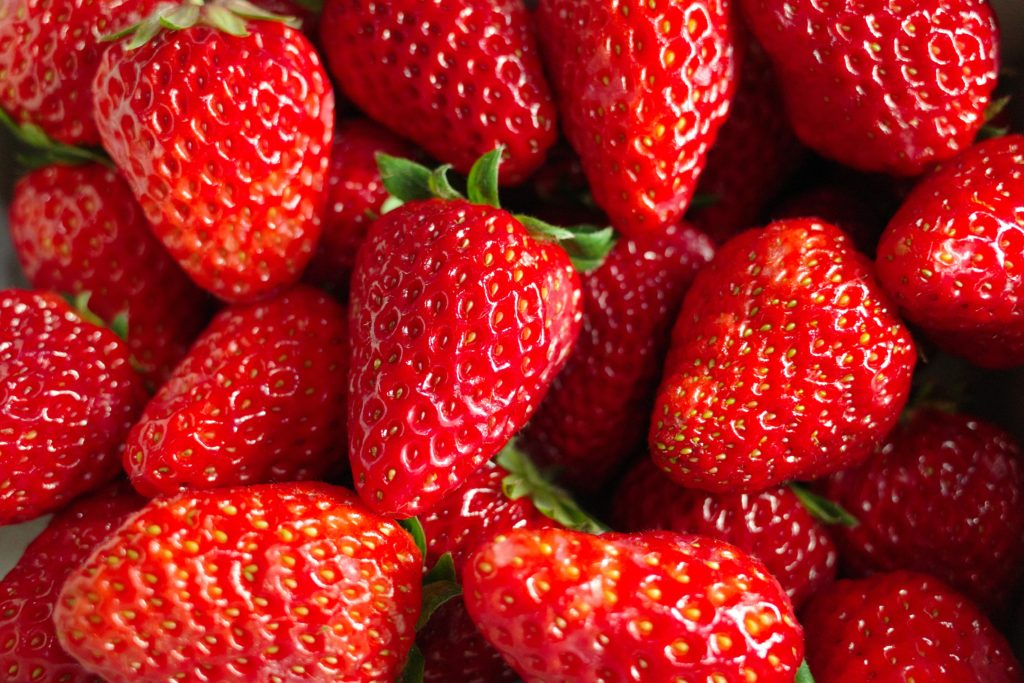
Difficulty: moderate
Time to harvest: 4-8 weeks
Nutrient needs: high
Season: Warm
Temperature: 65-80 degrees Fahrenheit
pH: 5.6 – 6.5
Light: 12 hours
Best system: DWC, Ebb and Flow, NFT
Beans
There’s a bean variety out there to suit everyone, and whether you want to grow pole and bush varieties they’ll do well in an aquaponic system. Choose pole beans if you want to maximize your space, but don’t forget to give them a support to grow up.
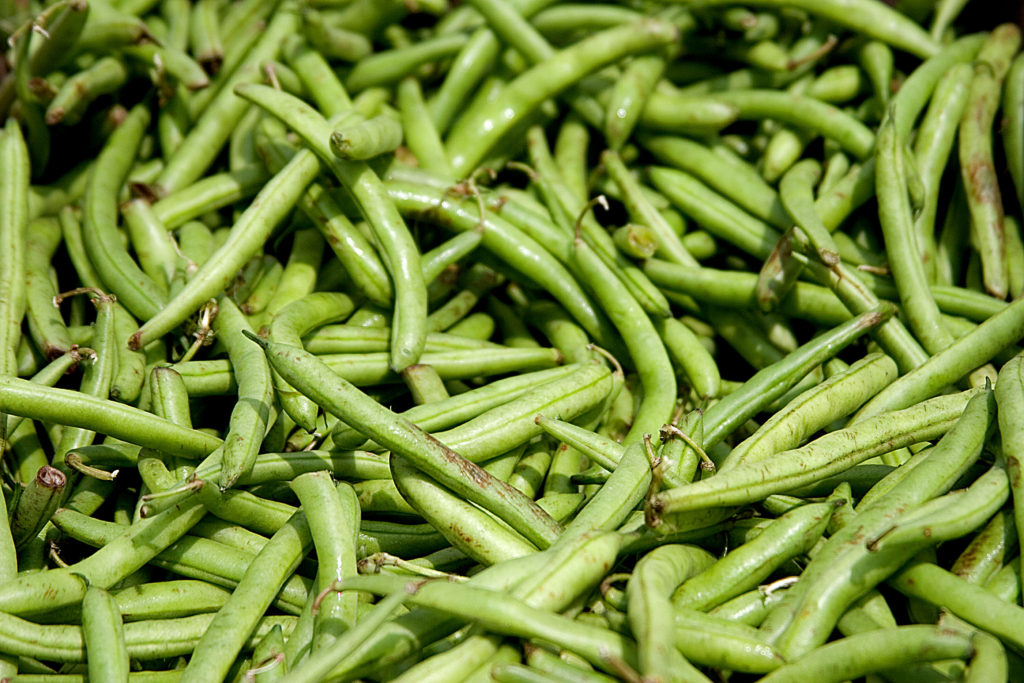
Difficulty: moderate
Time to harvest: 50 – 70 days
Nutrient needs: medium
Season: Warm
Temperature: 65-80 degrees Fahrenheit
pH: 6.0 – 6.5
Light: 12 hours
Best system: DWC, Ebb and Flow
Squash
Both summer and winter squash varieties do well in aquaponic gardens, and can feed you throughout the year if you time your harvests right. They are notorious space hogs, so allow plenty of room for them to grow.
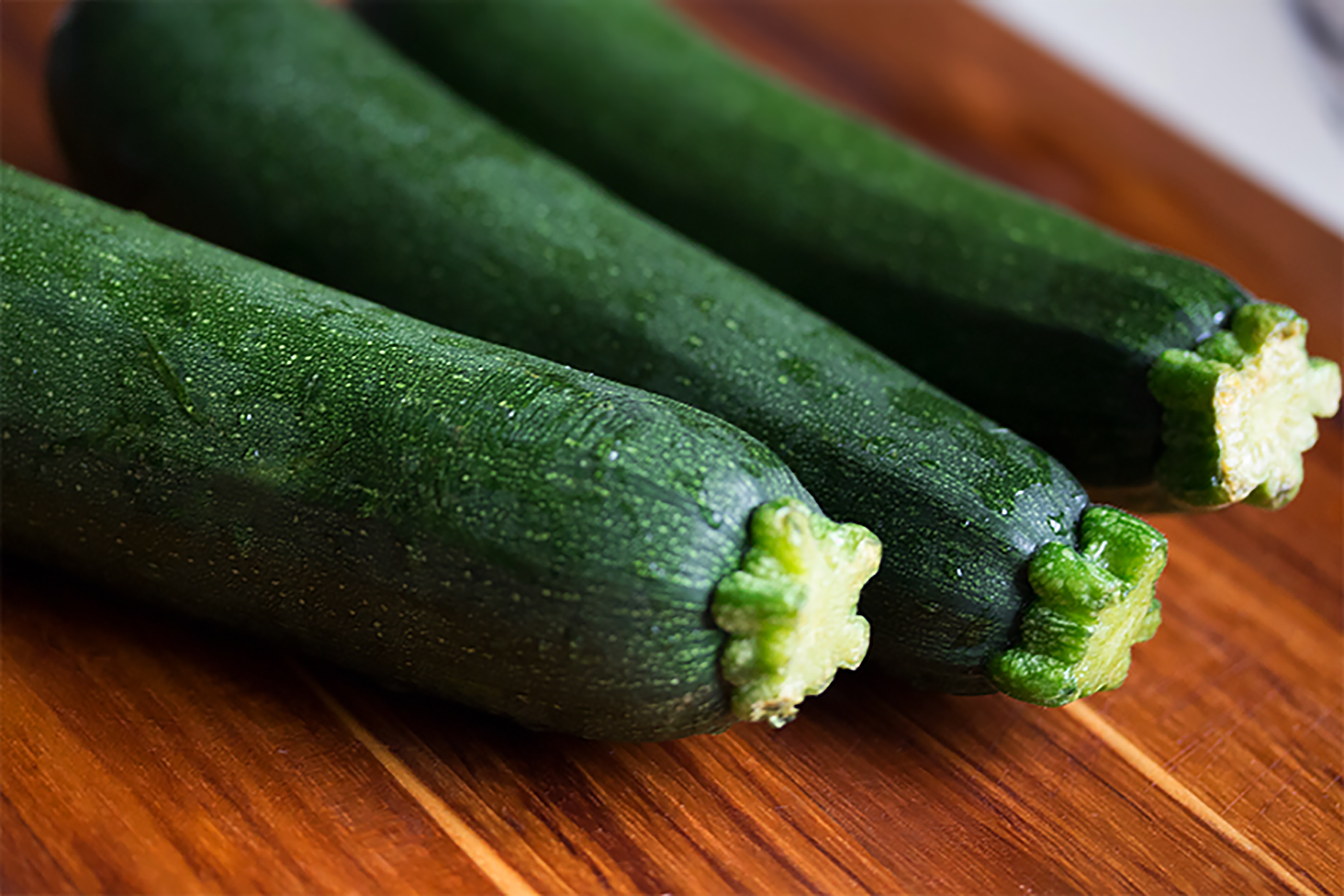
Difficulty: moderate
Time to harvest: 40 – 60 days
Nutrient needs: high
Season: Warm
Temperature: 65-72 degrees Fahrenheit
pH: 5.0 – 6.5
Light: 14 hours
Best system: DWC
The 8 Most Reliable Plants for Commercial Aquaponics
If you’re aiming to sell the fruits of your labor, the best plants to choose are ones that require minimal input and produce high yields. Many of these overlap with the recommendations for absolute beginners because they grow quickly in low-light and low-nutrient conditions, making them ideal for large-scale production and profitability. Since market growing is a whole topic unto itself, we won’t go into depth on these plants, but here are the eight best aquaponic crops to grow commercially:
- Lettuce
- Basil
- Chives
- Pak Choi
- Kale
- Swiss Chard
- Microgreens
- Hemp
What Else Can I Grow Aquaponically?
The sky’s the limit when it comes to what you can grow in your aquaponic garden. For all the latest guides and growing techniques in the world of aquaponics, hydroponics, and aeroponics, sign up for the Ponics Life Club! You’ll be the first to know when new articles are released and get exclusive access to resources and products to make your fish and plants happier and healthier.
Sign up for the Ponics Life Club on the blog!




